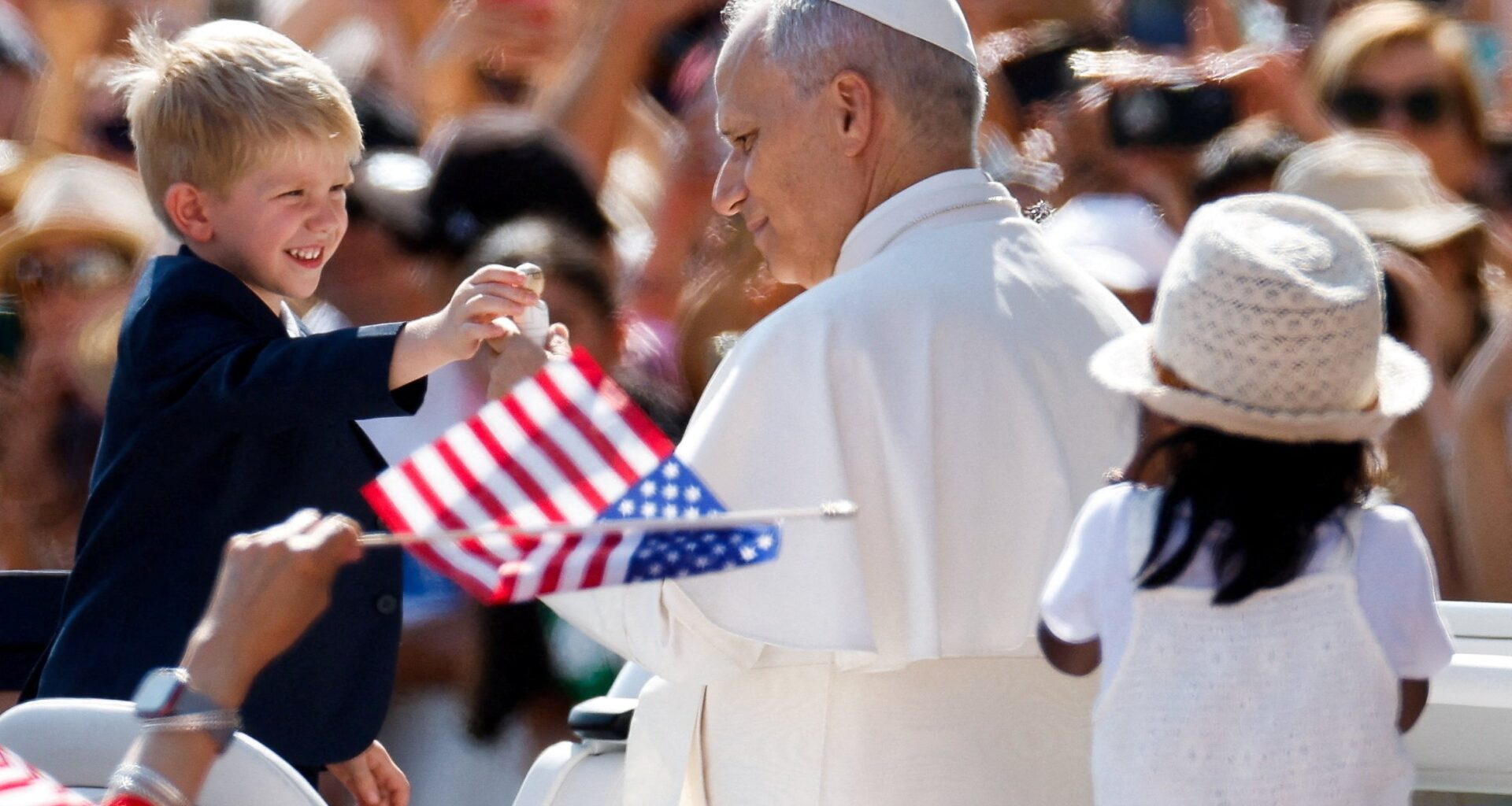Gallup’s first poll surveying Americans’ opinions on Pope Leo XIV was released Aug. 5, showing that Leo is the most favorably viewed out of a group of 14 “newsmakers” that included Ukrainian president Volodymyr Zelenskyy and Elon Musk. He is the only one to be viewed more favorably than unfavorably by both Republicans and Democrats.
Fifty-seven percent of U.S. adults view the new pope favorably, and his net favorability (favorable percentage minus unfavorable) leads runner-up Zelenskyy’s by a whopping 28 points.
Among Catholic adults in the United States, the pope’s approval rating is, as expected, much higher, with 76 percent viewing him favorably.
That favorability rating, however, breaks with the trend of previous Gallup polls on U.S. Catholic opinions of the pope: Both Pope Benedict XVI and Pope Francis were seen more favorably at their elections than their predecessors had been at the end of their papacies. Pope Leo’s 76 percent favorability rating among U.S. Catholic adults does not quite meet Pope Francis’ 77 percent favorability rating from late 2023, the last time Gallup polled U.S. Catholics about him.
Gallup began measuring the favorability of popes among Americans in 1993, ahead of one of Pope John Paul II’s visits to the United States. At that time, John Paul was seen favorably by 73 percent of U.S. Catholic adults, a number that would rise to the mid-80s before falling to 63 percent at the end of his pontificate. (Following the revelation of the sexual abuse crisis in 2002, John Paul’s disapproval rating among U.S. Catholics soared to 33 percent.)
Pope Benedict took office with a 67 percent approval rating among U.S. Catholics; that percentage rose before falling off around 2008; Gallup’s last opinion poll on Benedict showed 61 percent of U.S. Catholics viewed him favorably before his resignation.
Pope Francis was viewed much more favorably at his election, with 80 percent of U.S. Catholic adults saying they had a positive view of him; in the first months of his papacy, that number jumped to 89 percent. The Francis papacy saw more ups and downs in favorability among U.S. Catholics, but ultimately, as with his predecessors, Francis ended his papacy with a lower approval rating among American Catholics than where he started, with a still-high 77 percent approval rating at the end of 2023.
Gallup’s polling of American adults in general (not only Catholics) seems to show that many assume Pope Leo will be similar to Pope Francis: Leo is seen more positively by Americans who identify politically as liberal than those who identify as conservative (74 percent favorable vs. 48 percent, respectively), as Francis was, though views on Leo are less polarized than they were on Francis.
Past papal elections and the subsequent honeymoon period of the new pope have, in general, brought increases in donations to Peter’s Pence, an annual Vatican donation drive where Catholics are urged to give money for the pope’s charitable works. (Since the 1990s, there have been controversies over the use of Peter’s Pence funds to finance other Holy See works besides direct charitable aid.) A significant portion of the funds collected through Peter’s Pence—over 25 percent in 2024, according to Vatican News—comes from the United States.
At the end of the popular papacy of John XXIII, Peter’s Pence brought in around $15 million a year worldwide; the less-popular Paul VI saw declines in Peter’s Pence every year of his papacy, with the collection only bringing in around $4 million per year at the time of his death in 1978.
Neither Peter’s Pence nor U.S. opinion poll statistics were available to measure support for John Paul II’s election following 1978’s chaotic “Year of Three Popes,” when Paul VI died, John Paul I was elected and died 33 days later, and finally John Paul II was elected. However, according to Thomas J. Reese, S.J.’s 1998 book Inside the Vatican, the collections from Peter’s Pence generally rose steadily throughout the ’80s and early ’90s.
Because the Vatican did not publish its Peter’s Pence revenue regularly until 2021 (the data in this story comes from a mix of journalists’ archival research and interviews and sporadic Vatican reports), data was not immediately available for Peter’s Pence in the late ’90s. But in 2003, the year after the abuse crisis made global headlines, the collection brought in only $55.8 million, versus $67 million a decade earlier. It dropped again in 2004 to $50.5 million.
However, with a new papacy came a boon to donations: 2005, the year of Benedict’s election, saw an almost 15 percent increase in Peter’s Pence revenue, up to $59.4 million. Likewise, according to Gerald Posner’s book God’s Bankers, Peter’s Pence donations jumped in 2013 after the election of Pope Francis.
Garnering donations will be just one of the many financial concerns facing Pope Leo: At the cardinals’ meetings before the conclave that elected him, printed financial reports were distributed to every cardinal, and financial issues were discussed at length. Persistent deficit spending, financial mismanagement and allegations of fraud continue to bedevil the Vatican. It was clear that continuing Pope Francis’ financial reforms would be a key part of the new pope’s mandate.
While the opinions of U.S. Catholics about the current pope are hardly the only factor contributing to fluctuations in Peter’s Pence, the United States is likely to remain the Vatican’s biggest donor base by far. If Pope Leo can maintain his relatively broad appeal, he may be able to build bridges with potential donors—from across the U.S. political spectrum.
Related Stories
